
2020: Northwest Fish And Wildlife Year In Review
2020 was a nonstop firehose of news, and the Northwest fishing and hunting world was no exception.
If you don’t have all day to read the following 5,500-word review of the year that just was, here’s the 5-paragraph version:
We had everything from resurgent salmon runs up the Columbia to the unexpected release of a whopping 405,000 triploids in one lake, from Chinook recolonizing dam-blocked streams to rivers hosting their first coho fisheries in 40 years and springers in 66.
On the flip side, we had a six-week-long coronavirus-related shutdown of hunting and angling in Washington and nonresidents were barred from back-trolling, calling gobblers, digging clams and tending crab pots for a while in Oregon as Beaver State sportsmen were also asked to practice their crafts close to home.
Afterwards, there was booming big game license sales and two über-rare hunting ops – one inside a national park, the other bonus special permits issued in-season.
But also “wreckreation,” pneumonia-stricken bighorns, abrupt marine toxin-related clamming and crabbing closures, lawsuits galore and unprecedented coastal winter steelhead restrictions.
And then there were those two alligator gar that showed up in a very unusual place, The Little Fish That Could, and Central Washington’s very, very, very incestuous wolf.
Yes, indeed, 2020 had a little bit of something for everyone and as it wraps up, we’re taking our annual look back at a year like no other, beginning of course with its major disruption.
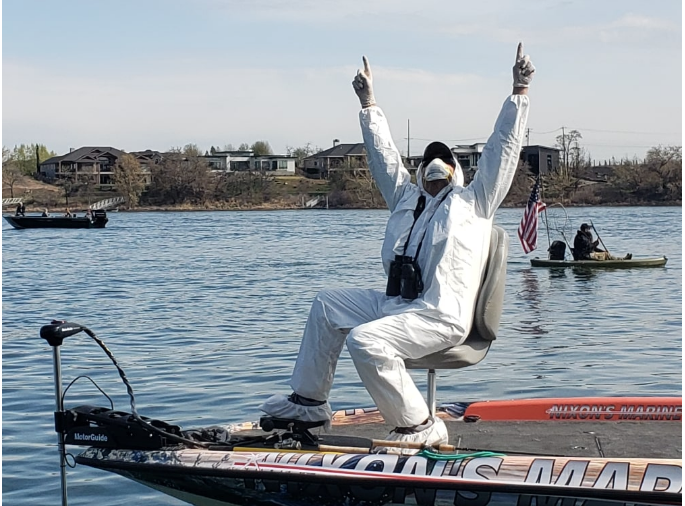
COVID-19 COMES TO TOWN
It was in early March that the word “coronavirus” first popped up on this blog – a WDFW press release about a chance to comment on hunting proposals in Kennewick (remember, this was in the PZT, or pre-Zoom times). But it and “Covid-19” quickly spread from novel terms to everyday ones.

Ultimately it won’t end up as impactful on our sporting life as the Blobs of the 2010s have been – a year ago here I dubbed the marine heat waves in the North Pacific the story of that decade – but it certainly was disruptive before we realized infections primarily occurred indoors, not in the great outdoors, and putting a simple mask on would go a long way toward reducing the spread.
Still, in mid-March, just as the gates at a big sportsmen’s show in Central Oregon were set to swing open, gathering restrictions implemented by Governor Kate Brown shut it down. The next day, the Big Horn Adventure Show, the largest in the entire Inland Northwest, abruptly cancelled at the behest of local health officials in Spokane, while ODFW also began scrubbing a series of in-person fishing and hunting clinics. The DFWs’ offices and hatcheries remain closed to the public, and going into the 2021 boat and sportsmen’s show season, with Covid still raging but multiple vaccines becoming available, one major event announced it was going digital only, while organizers of others have pushed theirs deeper into winter.
A virus of a different sort wiped out many of my blogs from the early days of the pandemic, so I have to lean on hazy recollections, but if I recall correctly, things began to cascade out of control when a scheduled razor clam opener on the Washington Coast was suddenly scrapped after a local health district opposed it over concerns Covid would be spread from urban areas to ill-prepared rural communities.
As things crashed down that wild March afternoon, somewhere scrawled across random pieces of paper as I settled into working from home are the worries of a WDFW honcho who suddenly found himself looking into a very deep abyss.
Where in the hell was all of this going?

Very soon thereafter, state campgrounds then wildlife areas and water accesses were closed, followed by The Big One – a two-week fishing and hunting shutdown that came via Governor Jay Inslee’s “Stay Home, Stay Healthy” order and eventually turned into a month and a half.
It was not only calamitous for WDFW’s reputation but put a ginormous hole in the kickoff of the fishing and hunting year – spring Chinook fishing on the Columbia, ocean bottomfishing and halibut, youth and general season turkey, and that most beloved of traditions: the trout opener.
On that day – the single most well-attended fishing event of the entire year – I found myself instead writing a blog titled “The Late April Saturday We All Stayed Home.”
Few other places in the solar system went as far as Washington did – France and Nova Scotia – and while Oregon’s response was much more tempered, with Gov. Brown and ODFW initially urging sportsmen to hunt and fish close to home to ensure opportunities remained open, a couple weeks later they slammed the door shut on Washington hunters and anglers flocking south.
Back to the north, the pushback to Inslee’s order was immediate, with state lawmakers urging him to reopen fishing, numerous petitions springing up online and outdoor radio shows grilling WDFW. With boating – but, inexplicably, not fishing out of a boat – still allowed, soon there were on-the-water protests, first in Eastern Washington on the Columbia and then moving to Western Washington.
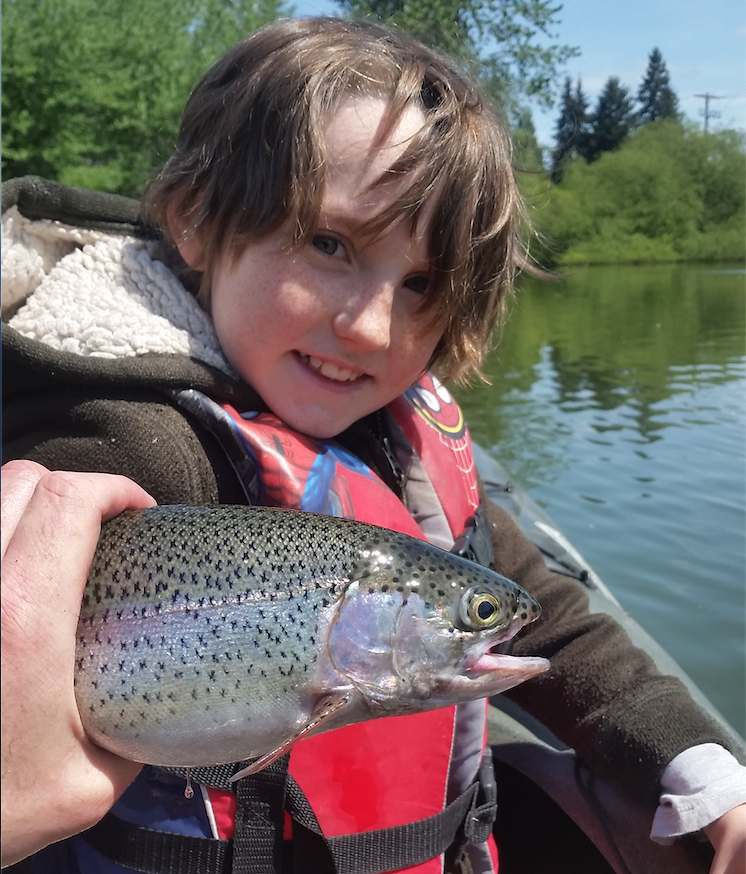
Eventually, and after consultation with stakeholders, many of the restrictions were lifted, leading to “A Day Unlike Any Other For Washington Sportsmen,” as I headlined a May 5 blog after taking my youngest out for trout on the “Simultaneous Season Opener of Nearly Everything,” a one-of-a-kind event that I hope is never repeated in either of our lifetimes.
The same day saw Oregon reopen fishing and hunting to out-of-staters, though it took awhile longer before nonresidents were greenlighted to go crabbing and clamming on Tillamook and other bays and beaches.
Still, to help check the spread of Covid, guides and charters had to modify their operations, Washington Coast anglers couldn’t head onto the Pacific until late May and halibut season on the ocean was delayed until midsummer. Meanwhile, two key North Coast ports are still off-limits to nontribal visitors and the Fish and Wildlife Commissions and DFWs continue to hold their meetings on Zoom.
“Don’t forget to unmute yourself!”
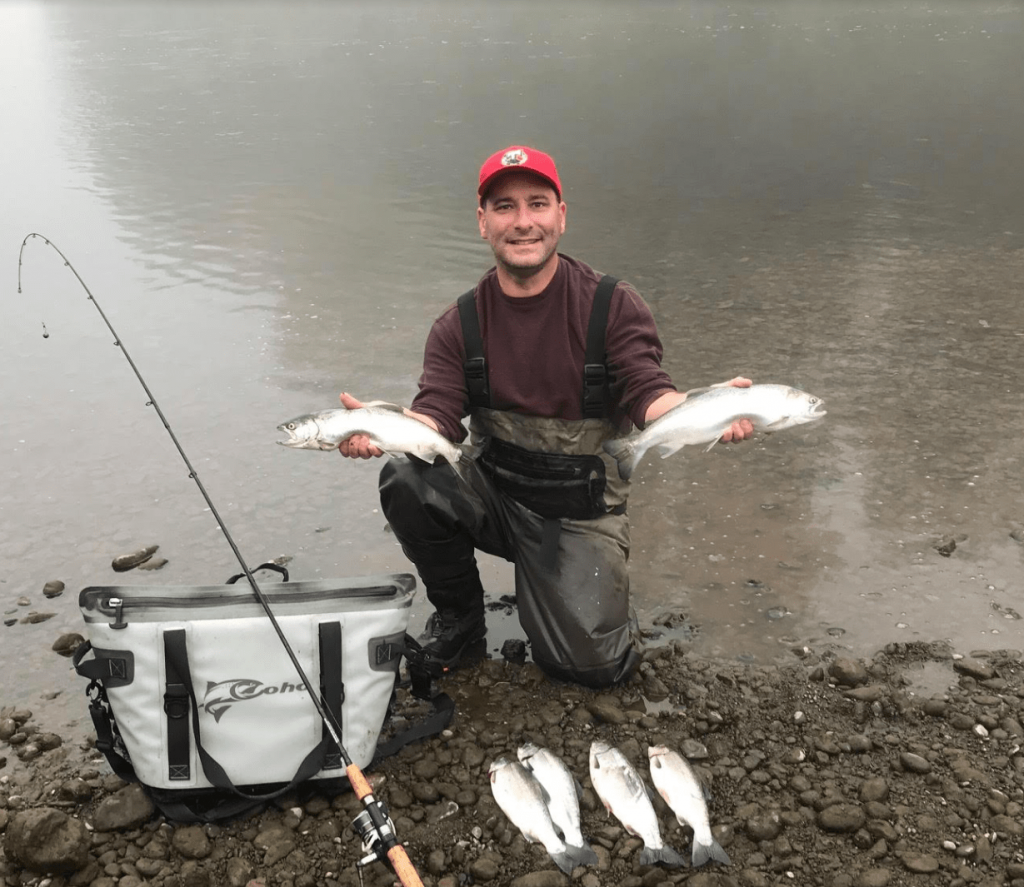
COLUMBIA FISHERIES GENERALLY UP, BUT PROBLEMS EMERGE
So now that we’ve got that hellstorm out of the way, how about some good news?!?!
For starters, there was that huge surge of coho jacks that came up the Columbia and other streams – 25,080, the most on record at Bonneville – in late summer and fall, a hopeful portent (cross all your fingers and toes!) for 2021.
Those precocious silvers piloted a rebounding fall Chinook run on the big river too, including to the Hanford Reach, where the sport catch was up 23 percent over 2019 and about 5,000 adult fish better than 2018, which was a low mark back to 2009.
Reduced northern ocean interceptions may have had something to do with that, but the Columbia’s sockeye run also surpassed expectations by 100,000 fish and in June and July anglers up and down the system once again were able to plunk from shore or boat for these super-tasty red salmon, with 6,262 caught in Tri-Cities waters alone and limits boosted to four above Priest Rapids Dam.
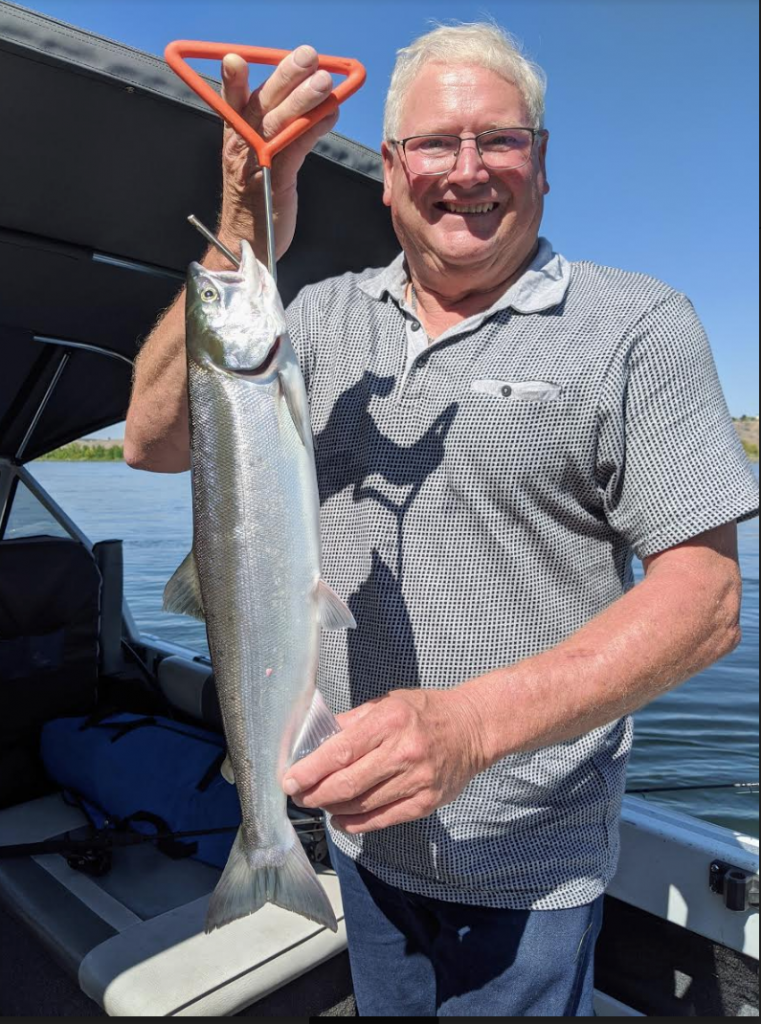
Not only that, but the summer Chinook return came in twice as strong as forecast and that led to additional fishing time on the lower river.
Then there was June’s absolutely bonkers back-to-back record daily shad tallies at Bonneville – 570,329 and 588,969 fish – which helped fuel both one of the largest runs on record and a burgeoning fishery at the dam and below and above there.
Smelt dippers also found themselves back at it for the first time since 2017, scooping 35,500 pounds worth of eulachon out of the Cowlitz on a mid-February opener. Some wag wrote, “In a time of depressed salmon and steelhead runs and even as some were angry with the opportunity not being on a Saturday [it was held on a Friday to limit impacts on the ESA stock], the shimmering scales of smelt represented a glimmer of hope as well as brought the community together on the banks of a river to witness one of nature’s wonders and keep an old winter tradition alive.”

Meanwhile, thanks to ODFW and Nez Perce Tribe reintroductions in the 2010s, enough coho returned to the Grande Ronde this fall that for the first time in 40 years a recreational fishery was held on the Oregon side of the gorgeous winding river.
And in Northcentral Washington, where tribes and agencies are working to bring salmon back to the Upper Columbia, where they’ve been blocked since the Great Depression by Grand Coulee Dam and furthermore by Chief Joe Dam below there, drone video emerged of Chinook spawning in the Sanpoil River. Three dozen redds were surveyed in the river after the Colville Tribes earlier trucked the fish around the dams and released them there to do their thing.
All was not hunky-dory on the Columbia, however.
In a much-derided 5-4 vote in mid-September, the Washington Fish and Wildlife Commission continued to chip away at salmon reforms, changing sport-commercial allocation formulas, moving 5 percent of shared Lower Columbia springers to Washington’s Snake River anglers, potentially allowing gillnetting during years of stronger spring and summer Chinook returns, and threatening concurrency with Oregon. It had a disparate coalition asking Inslee as well as Brown to “abandon this misguided effort.”
The Columbia marriage of concurrence was on rocky ground in the lead-up to that vote on another front too, with one of the most fascinating fisheries management clashes I’ve ever witnessed centered around sturgeon. During a pair of hours-long conference calls in June and September, first WDFW balked at ODFW’s proposed late spring keeper opener on the Lower Columbia, and then ODFW demurred to WDFW’s wished-for fall season on the same waters. Officials took pains to say it wasn’t tit for tat, but it had a fishy whiff.
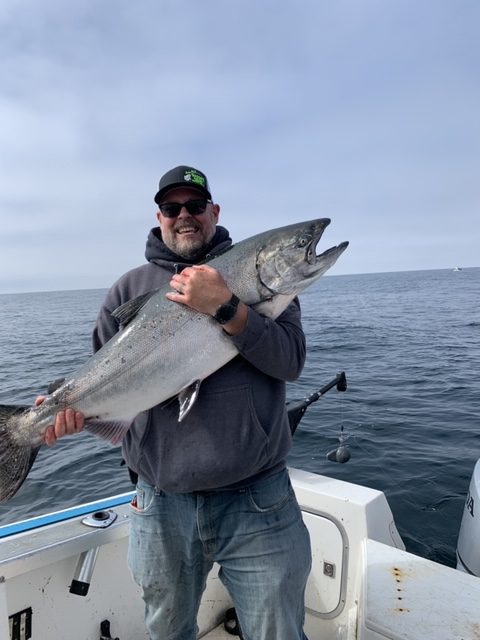
PREDATORS, PETITIONS AND THREATENED COURT PROCEEDINGS – EVERYBODY’S PHAVORITES
There will never not be controversy about managing toothsome critters, and 2020 made sure of that on multiple fronts as environmental groups piled the pressure on the DFWs over predators and other critters.
In late summer, even as WDFW had won a “home run of a decision” from a King County Superior Court judge over its wolf removals – as well as kicked a particularly troublesome member off the Wolf Advisory Group – the court of public opinion had Governor Inslee bowing to out-of-state interests.
At the persistent chivvying of southern Arizona- and western Oregon-based organizations, among others scattered across the western half of the country, Inslee instructed the Fish and Wildlife Commission to begin making new stricter nonlethal rules and policies around wolf-livestock conflicts in Northeast and Southeast Washington ahead of the 2021 grazing season.
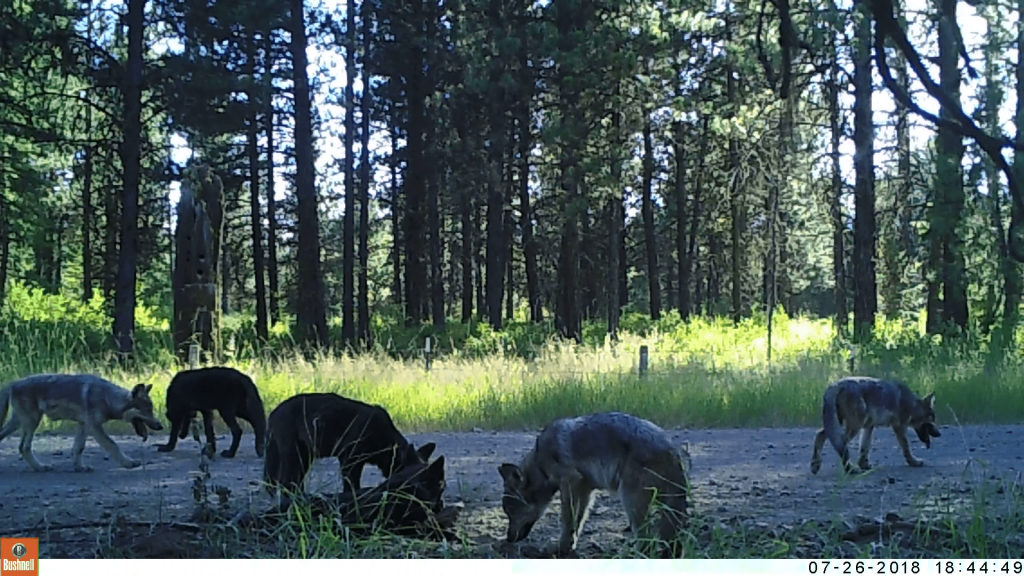
Meanwhile, the nine-member citizen panel that oversees WDFW also banned hunting contests targeting coyotes and other animals that don’t have bag limits (and made it an infraction to hold hunting contests without a permit) in September, making Washington the seventh state in the country to do so.
However, earlier this month the commission bucked the threat of a lawsuit over “minor” changes to 2021 spring bear permit hunts and went ahead and standardized season dates to April 15-June 15, slightly tweaked tag levels and dropped some private timberlands out of the program.
To the south, Oregon’s Fish and Wildlife Commission this fall split evenly on a petition that would have banned beaver trapping on national forests and other federal lands, leaving the activity in place for now.
However, both commissions pledged to take deeper dives on spring bear hunts and beaver management, respectively.
Also this fall – and at long last – with gray wolves “biologically recovered,” the U.S. Fish and Wildlife Service announced federal delisting in the western two-thirds of Washington and Oregon, along with elsewhere in the Lower 48, taking effect Jan. 4, 2021 – though of course not without the immediate threat of a lawsuit from the usual suspects. Regardless, wolf populations in both states continued to grow, last winter’s counts found, though the Colville Tribes quit tallying them as the animals are considered recovered on their reservation.
While in January ODFW’s Commission denied a petition to end retention of wild steelhead on the South Coast, where the agency “does not have a conservation concern” and says the fish are adequately protected via regulations, at the other end of the year, the Wild Fish Conservancy continued its litigiously predatory ways, threatening to torpedo yet another WDFW Puget Sound steelhead program, this one a do-or-die bid for the future of consumptive fishing for summer-runs on the Skykomish. It’s a key part of the new QuickSilver Portfolio, rolled out in May and a collaborative, multistakeholder approach that applies a mix of management strategies to the region. This latest hand grenade is termed “perhaps the Wild Fish Conservancy’s most shameful lawsuit yet” in an upcoming Northwest Sportsman article.
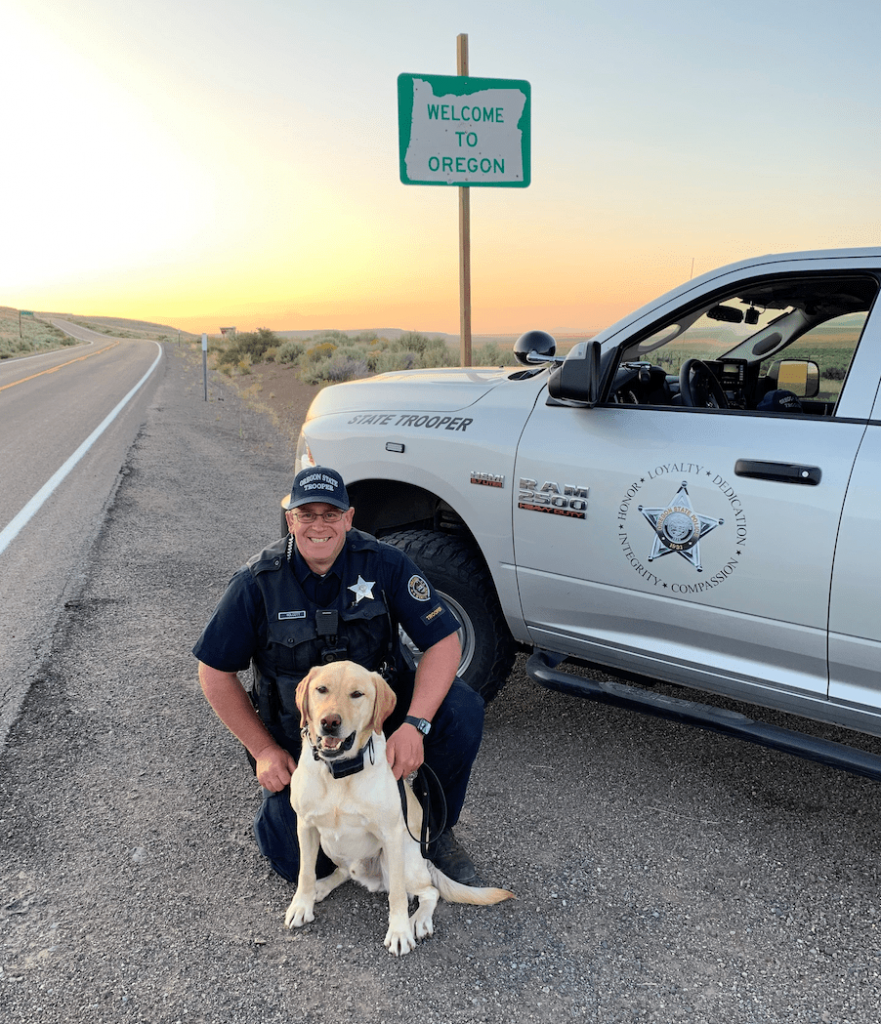
AGENCY WORK
OK, that is enough about furry fangers and those we’d like to feed to the furry fangers.
The DFWs upped their communications game in 2020, with ODFW launching the fascinating Beaver State Podcast. Now at a whopping 40 episodes, the series examines all sorts of critters, interesting outdoors people, fish and wildlife issues – my favorite so far is the four-parter on mule deer, which was timed perfectly with hunting season – and it even does a little myth-busting around hatcheries.
ODFW also spotlighted poachers in a new campaign that kicked off this year, including detailing one of the most heinous wanton wastages of wildlife this region has seen in a while. Per the agency, a 48-year-old Christmas Valley, Oregon, man named Michael Scott Phillips admitted to slamming his vehicle into a group of antelope at more than 60 miles an hour “because he hates pronghorn.” WTF?
We posted links to help get the word out on many more Oregon cases, including the fall “frenzy” of poaching in Lane County, the two Astoria-based commercial fishermen who were allegedly crabbing in the Cape Falcon Marine Reserve, and the three west-central Oregon men charged with poaching 27 deer, elk, bears and other big game in six coastal and valley counties.
As for WDFW, it was looking like a brutal year given the Guv’nah’s month-and-a-half-long sporting shutdown, but then Covid hit and dire state sales tax revenue forecasts had the agency trying to figure out how to cut $31 million. Ironically, that was about $4 million more than lawmakers had, at the strong backing of a coalition of fishing, hunting and conservation groups, just finally provided to WDFW via a strong infusion of General Fund dollars earlier in the year to shore up its budget.

However, things are looking a lot less grim these days, as Inslee’s recently released two-year spending proposal did not include a 15 percent hack after state revenue projections improved. Indeed, hunting license, tag and special permit sales were through the roof – so much for that WDFW boycott – as lapsed and new hunters alike joined the hardcore sportsmen afield to secure their own food in a year that at one point saw shortages at the meat counter.
Given widespread unemployment, gathering restrictions and home isolation, other outdoor activities besides hunting boomed, unfortunately leading to “wreckreation” on overwhelmed public lands, giving managers cleanup and policing headaches.
And in what was probably the toughest but most fulfilling story I wrote all year, in February staffers from WDFW’s Region 5 office helped a woman who was dying of liver disease catch one last fish. They delivered some trout to a large stock tank placed below a deck so that Diane Sanders, a longtime angler, was able to fish for rainbows and have them for dinner with her family before she passed away that evening.
“It was wonderful, far more than what the family ever expected,” her son Robert told me. “Thanks to Jesus and WDFW and the whole state of Washington, but especially the people at the Ridgefield facility.”
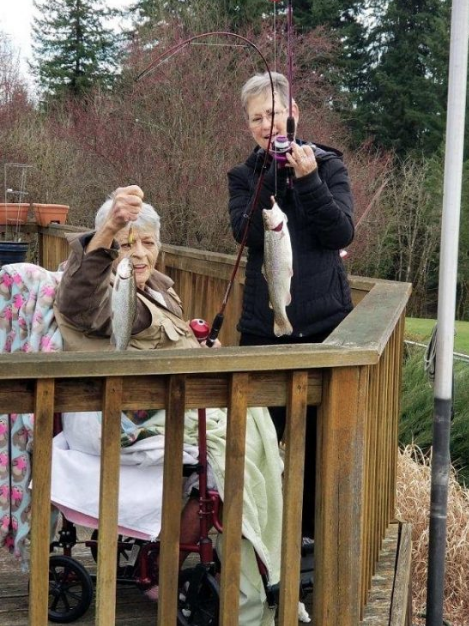
STEELHEAD RUN WOES, BUT SOME GOOD NEWS
The year in Northwest steelhead began on a down note and only got worse as fish runs and fisheries suffer from lingering impacts of the Blob, both in the ocean and with freshwater habitat that was severely shrunk due to lack of snowpack in 2015.
In January, WDFW announced that the much-coveted and long-fought-for Sauk-Skagit catch-and-release fishery for wild winter-runs was a no-go after the forecast came in 38 steelhead short of the minimum needed for any sort of season. It was bitter news coming after “the worst ever return to Puget Sound” of hatchery winters.
Then came word in February that the Chehalis and its tribs as well as Willapa Bay rivers were closing early. In hindsight, that was a harbinger of what was to come this season, as following late November and early December meetings, WDFW instituted an unprecedented set of restrictions on coastal rivers, including banning all fishing from a floating device (boats can still be used for transportation) and bait, plus single-hook-only rules and more.
While the measures are expected to reduce the catch by more than half and help out some chronically underescaping runs, they are controversial with boat anglers, guides and disabled fishermen, caught the chair of the Fish and Wildlife Commission off guard, and led to a short-notice Zoom session that maxed out the platform as some 500 or so tuned in to voice their opinions to WDFW brass or find out what the deal was.
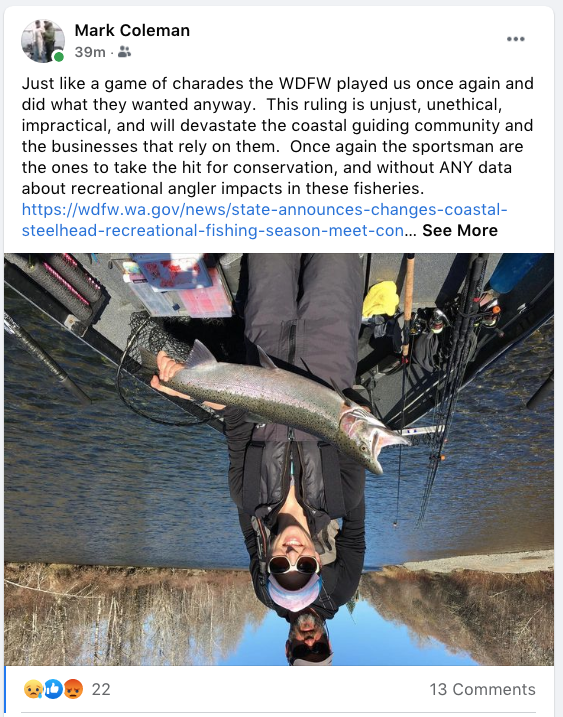
But it wasn’t all grim news with our favorite species.
Idaho’s B-run exceeded forecasts by a massive margin (though still came in low), and in one of the year’s most fascinating stories, an IDFG tech this fall detailed the little steelhead that could – a 9-year-old hen that’s laid an estimated 9,000 eggs in at least three redds, crossed 32 dams in making four trips to the ocean, and survived one seal bite in its life. Growth lines in the fish’s scales, as well as a passive integrated transponder, reveal its amazing story.
At Willamette Falls, after California sea lions came under the gun in 2018 and 2019, they wisely stayed away last winter and wild Willamette steelhead returned in numbers not seen in several years, helping to very sharply reduce their risk of extinction.
Speaking of marine mammals, in a first, six Steller sea lions were lethally removed at Bonneville this fall after Northwest states and tribes received federal authorization to take out up to 776 SSLs and California sea lions on more of the big river and its tributaries over a five-year period to create “safe zones” for ESA-listed salmon and steelhead stocks.
And Rising from the Ashes, a film released this past spring, detailed how rainbows that had been locked behind two dams on the Olympic Peninsula’s Elwha River for over a century reverted to their anadromous ways, as if the concrete plugs had never blocked their path to the sea and back. It’s allowed the bottled-up summer-run stock to bounce back, with survey crews counting at least 309 adults in the 15-mile headwaters reach in 2019 — more than 2018’s count for the entire river and 100 times as many as were found in all between 2009 and 2012.
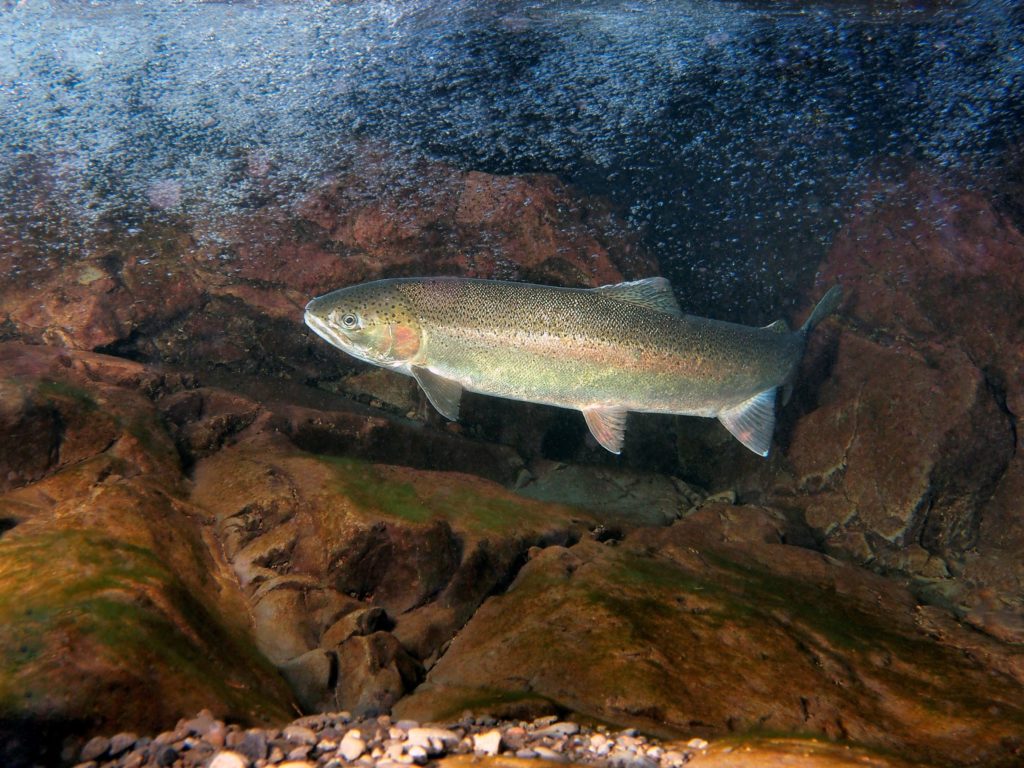
STATE-TRIBAL ISSUES
In midfall the Skokomish Tribal Council passed a resolution directing officials not to agree to 2021’s collective salmon seasons with WDFW, an eye-popping development in an ongoing reservation boundary dispute with the state agency, which responded in a muscular letter that it was “not prepared to disclaim the State’s ownership” of the Skokomish River and furthermore, that salmon seasons and the stream were different issues to be dealt with separately. WDFW will hope the Department of Interior agrees with its finding about the reservation border in the coming weeks, or it may become moot for awhile given changing administrations and a new secretary.
Same goes for a permit WDFW is pushing hard on the Army Corps of Engineers to get to build a new single-lane boat ramp on the west side of Puget Sound, opposed by a local tribe on treaty fishing rights grounds.
Meanwhile, in October a North Sound sportfishing organization asked a federal court to allow it to intervene in the Boldt Decision, a first step towards requesting WDFW better abide by the landmark legal case that reaffirmed the 50-50 split of harvestable salmon and steelhead with Western Washington treaty tribes. Anglers say the North of Falcon salmon-season-setting process is out of whack as the state is hobbled by a weak bargaining position with the tribes and forced into misbalanced harvest shares. In that sense, the Skokomish Council’s aforementioned resolution may have backfired and serve as Exhibit A, your honor.
But it wasn’t all a battle. Witness WDFW’s 20-minute film Lifeblood, released in January, that focused on anglers and tribes, as well as farmers and fishery scientists, working to improve habitat and salmon runs in Snohomish County, and the joint state-tribal effort that in part brought spring Chinook fishing back to the North Fork Nooksack after a 66-year absence.
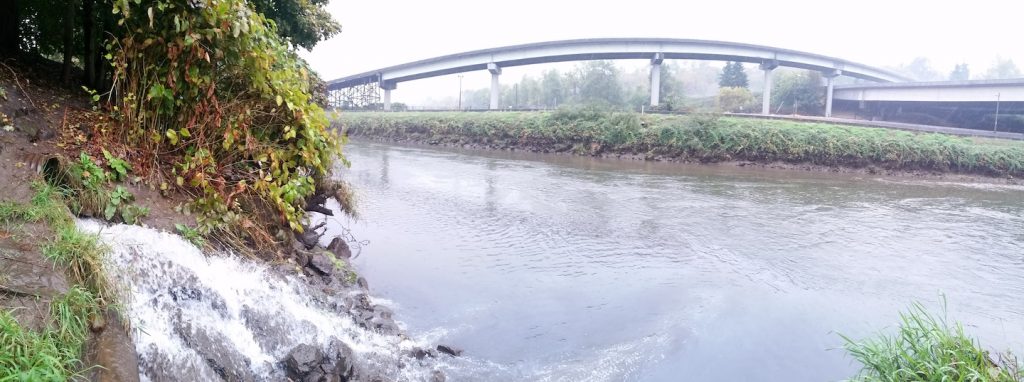
ENVIRONMENTAL NEWS
In March, motorized dredging was banned on Washington streams designated as critical habitat for ESA-listed salmon, steelhead and bull trout, while in December “the ‘smoking gun'” that kills coho in Puget Sound’s urban streams was revealed: 6PPD-quinone, the chemical result of a vehicle tire preservative reacting with ozone and subsequently washing into stormwater runoff. Now, to do something about it …
Dams were taken out on the Pilchuck and Nooksack Rivers, improving fish passage and access to headwaters habitat, and Gov. Inslee paused development on an environmental impact statement for a flood-control project on the upper Chehalis River and directed that a no-dam alternative be drummed up. Meanwhile, repairs on a Puyallup diversion led to a flood of plastic particles being washed downstream and a tribal lawsuit.
There was good news about southern resident killer whales after babies were born this year, including to the orca momma that pushed her dead calf around for two weeks a couple years ago. With lack of Chinook the key factor in their plight, $11 million in grants released in August for hatchery and habitat projects was a welcome development toward increasing SRKW prey.
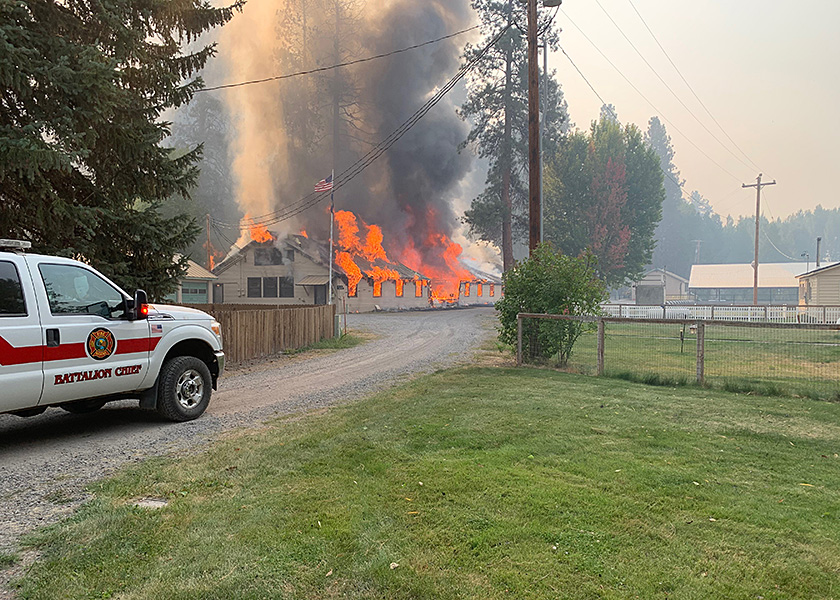
September’s massive, extraordinary-east-wind-driven range and forest fires devoured all or nearly all of WDFW’s Chester Butte, Sagebrush Flat and Swanson Lakes Wildlife Areas – key habitat for prairie grouse and pygmy rabbits – and along with scorching portions of the valleys of Western Oregon’s McKenzie, North Umpqua, North Santiam, Clackamas and other rivers right down to the waterline, they caused severe damage and the loss of 400,000 young fish at ODFW’s Rock Creek Hatchery, with other facilities also singed. A gripping video detailed how one hatchery manager and his crew raced to turn loose more than a million salmon, steelhead and trout at Leaburg before their fresh water supply dried up and the fish died.
And then in midfall, what was primed to be an absolute stellar razor clam season on both the Washington and northern Oregon Coasts began to come apart as levels of domoic acid, a marine toxin, spiked above the cutoff limit, first at beaches on the north side of the Columbia, then the south. Levels remain high, putting winter digs at risk, and also have led to subsequent closures of crabbing in Washington’s coastal bays and Central Coast waters. Federal researchers posit that the Blobs of recent years appear to “have the ability to seed new offshore hotspots, like ocean ‘crock pots’ where blooms can develop in subsequent years.” Ugh.
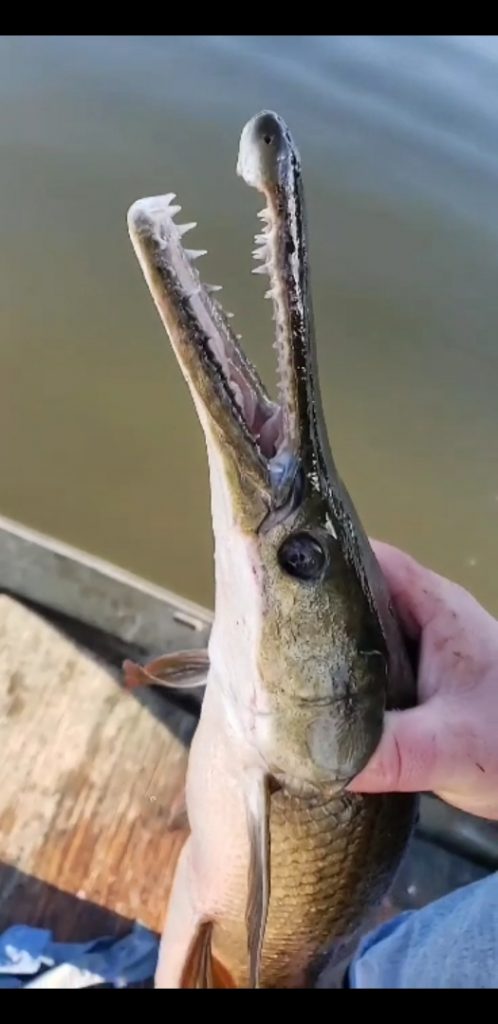
CRITTERS ON THE PROWL
On the oddball – and wildly viral – side was the capture of two alligator gar in April at the mouth of the Yakima River near Tri-Cities by a commercial carp netter. The pair of decidedly nonnative fish from the South were likely dumped out of somebody’s aquarium. The fisherman let them go because his permit – subsequently modified – didn’t allow him to keep them, but despite others searching for the gar, there was no further sign of the exotic fish. Hopefully this winter’s cold weather kills them.
Then there was 32M, the longtime Teanaway Pack alpha male that contributed a very, very unusual chapter to the ongoing story of wolves in Washington. It not only died at A) the ripe old age for wolves of 12, but sired a number of litters with first B) its sister, then C) one of their pups, and then D) a second daughter, a rarity outside of isolated populations. WDFW made a movie about the “patriarch of wolf recovery in the Central Cascades,” but glossed over the whole incest angle.
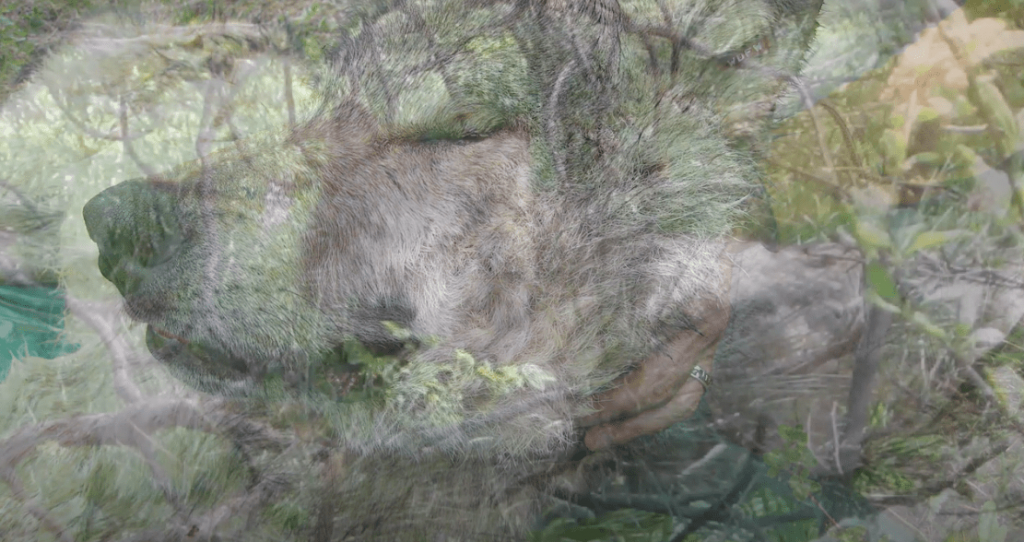
BAD NEWS FOR BIG GAME HERDS
In January ODFW announced that an estimated 2,000 whitetails had died in the Pendleton area in late 2019 from epizootic hemorrhagic disease, sometimes called bluegtongue, leading to the cancellation of 227 tags this fall to help the herd rebuild, while in April came word that hoof disease had been found for the first time in the Yakima elk herd, Washington’s largest, as the affliction with no known cure inexorably moves around the state and Northwest.
Then, in early fall, a diseased domestic ewe that came in contact with bighorn rams in nearby Quilomene herd led to the culling of a dozen of the wild sheep as state wildlife officials moved quickly to try and prevent the spread of Mycoplasma ovipneumoniae, which has crushed other herds.
As it turned out, all 12 of those Quilomene bighorns tested negative, giving WDFW managers a “big sigh of relief,” but as it was 2020, the news immediately got worse when a new strain of Movi turned up in previously uninfected bighorns near Yakima. And then came word the Burnt River herd in Northeast Oregon was dealing with an outbreak as well.
It had hunting and conservation groups calling on federal and state land managers to do more to keep grazing sheep the hell away from bighorns.
RARE HUNTING OPPORTUNITIES
There was a bit of a silver lining in the Yakima bighorn herd’s disease diagnosis. WDFW took the very rare step of granting additional special permits to hunters for five more rams while the season was under way. It was a means of offering “additional opportunity before the sheep died of pneumonia rather than just accept the reduction of future opportunity.”
And while it officially wasn’t a hunt – but did utilize WDFW-vetted, ground-based teams of marksmen and backpacking enthusiasts (read: hunters, spotters and meat packers) – 31 mountain goats were lethally removed from inside Olympic National Park in September and October, part of a multiyear effort to eradicate the species in Washington’s rugged peninsula mountains.
It followed on a third summer of aerial capture operations in August and brought the total to 412 nonnative goats taken out of the Olympic Range, with roughly three-quarters of those translocated to the North and Central Cascades to help rebuild herds there.
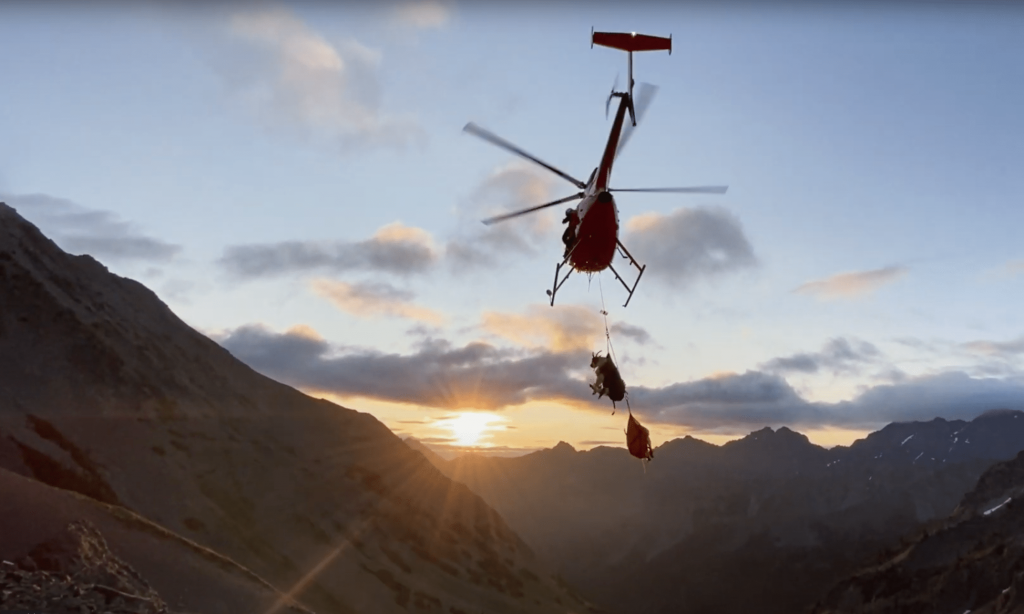
STUFF I DON’T HAVE A CATEGORY FOR BUT WAS NOTEWORTHY
In April, 405,000 triploid rainbows were unexpectedly released into Riffe Lake on the upper Cowlitz, thanks to quick work from Larry Pryor of Northwest Fisheries Enhancement, Tacoma Power and WDFW. The trout were being raised for the dinner table by Cooke Aquaculture, but with a state permitting delay and coronavirus staffing issues at the fish farm, the 6-inchers almost ended up in the dump. Instead, they should provide good fishing in 2021 and coming years as they grow in the giant reservoir.
Walleye anglers expressed worry about a state study on the Columbia and what it might mean for a thriving, destination fishery. In a very distantly related story, the northern pikeminnow season on the big river was extended into October and rewards boosted to a flat $10 for every fish in hopes of salvaging a “tough season, weird year” impacted by, you guessed it, Covid. In Oregon, Coquille River managers OKed everything but flamethrowers on nonnative smallmouth bass – we exaggerate, but only slightly, as spears, spear guns and bait were all allowed this summer in a bid to help struggling fall Chinook on the South Coast stream.
Beyond the resurgent Columbia, salmon runs were all over the place, with “extremely low” returns of Rogue and Clackamas springers leading to restrictions, Lake Washington sockeye essentially fizzling out with a new lowest-ever mark of fish back to the Cedar River, just 3,000, but fall fishing opened for Willapa Bay tribs coho and limits were boosted and then season was extended for Skagit silvers, thanks to good runs.
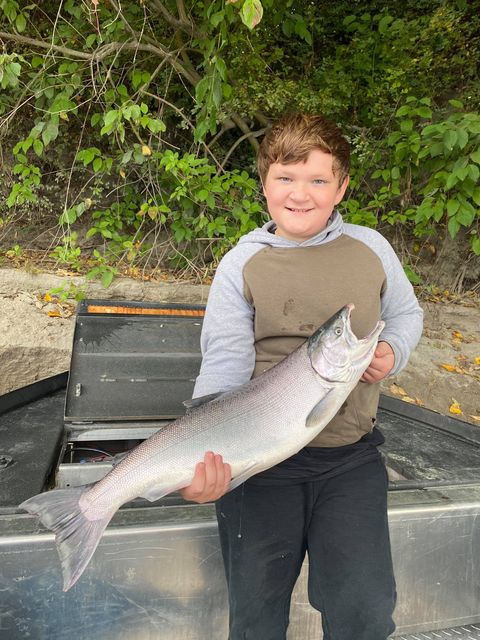
In June, ODFW began talking about switching from general archery deer and elk seasons in Eastern Oregon to controlled tags only – a big change that matches how rifle hunts are held east of the Cascades. A decision on wapiti was postponed, but the Fish and Wildlife Commission moved forward with special permits only for bucks starting in 2021.
As 2020 came to a close, so did the long, glorious fishing-industry career of Bernard “Buzz” Ramsey as he retired from Yakima Bait and Pure Fishing and following years with Luhr Jensen. It leaves the legendary Northwest salmon and steelhead angler with even more time to fish – and hunt – and he will also continue to write a monthly column for Northwest Sportsman. The year also saw the retirement of Inland Northwest Wildlife Council executive director Wanda Clifford, who had been with the venerable Spokane-based organization for three-plus decades and is one of just three women in the Hunters Heritage Council’s prestigious Hall of Fame. And after 32 years running Barrier Dam Campground on the fishy Cowlitz River, Karen and Don Glaser retired as well.
And finally, in a year chock-full of idiotic hyperpartisanship – 12 months where facts and the truth nearly slipped out of our collective grasp (and still might, there are a few hours left in the hellyear known as 2020) – it was great to see that those in charge of this country could at least do good things for fish, wildlife and habitat if they wouldn’t for their fellow citizens.
In July they passed the “historic” and “monumental” Great American Outdoors Act, which finally and fully funds the Land and Water Conservation Fund at $900 million annually – a boon for access, recreation, critters and habitat – and provides $9.5 billion over the next five years for maintaining public lands and park infrastructure.
Then October saw passage of America’s Conservation Enhancement Act, lauded by Ducks Unlimited and the Association of Fish and Wildlife Agencies as “the most important fish and wildlife legislation enacted this congressional session” for its impact on wetlands and conservation.
Reflecting on both Congressional acts, DU’s CEO said, “In a year largely defined by doubt and uncertainty, we can also remember 2020 as a banner year for the conservation community.”
Maybe I will get out of bed on New Year’s Day.
Editor’s note: I’m quite sure I have forgotten pretty important stories, so if you’ve read this far and care to help me hit the 10,000-word mark, drop me a line at awalgamott@media-inc.com.
Correction, 1: 15 p.m., Jan. 14, 2020: The smelt photo was inadvertently misattributed to Julia Johnson. It is in fact a WDFW image. Our apologies.
